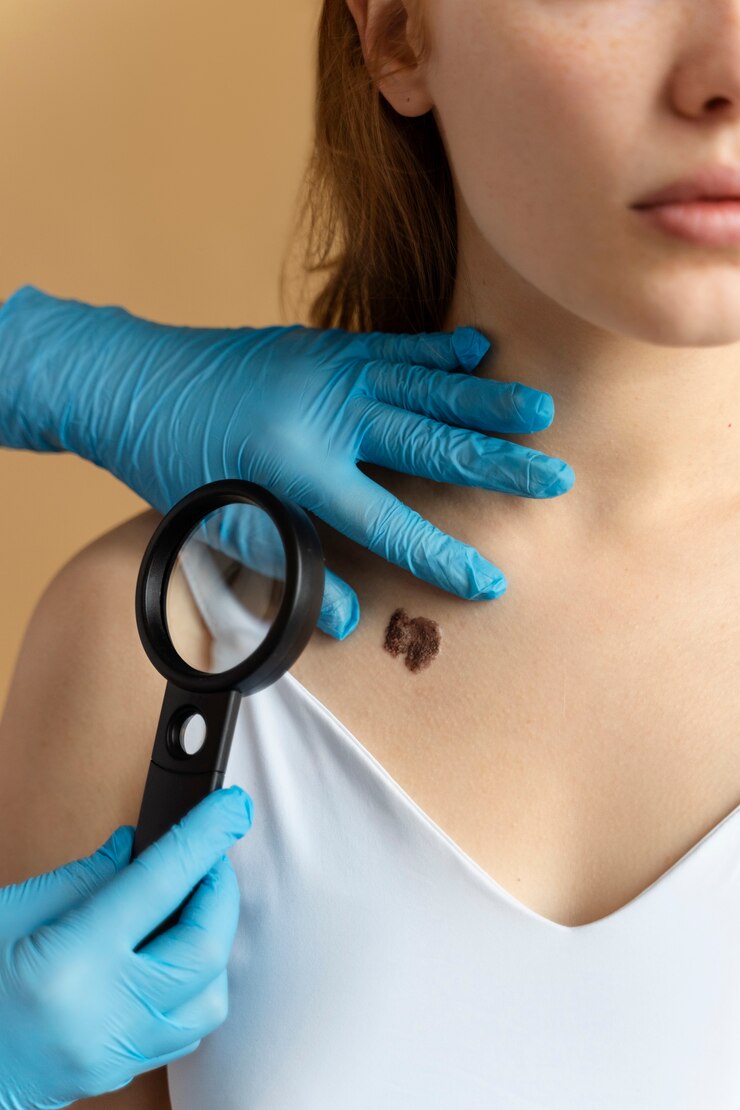Skin tags are benign growths that can be found on various parts of the body, including the neck, armpits, and eyelids. While the removal of Skin Tag Removal in Dubai is often a simple and quick procedure, understanding the healing process is crucial for optimal recovery and minimizing complications. This guide will explore the stages of healing, aftercare tips, and what to expect post-removal.
The Skin Tag Removal Procedure
Before delving into the healing process, it’s important to understand the common methods of skin tag removal, as this can affect recovery.
1. Excision
Excision involves cutting the skin tag off using sterile scissors or a scalpel. This method is usually performed under local anesthesia to ensure the patient’s comfort.
2. Cryotherapy
Cryotherapy entails freezing the skin tag with liquid nitrogen, which causes the tissue to die and fall off. This method may cause some swelling and redness immediately after the procedure.

3. Electrosurgery
Electrosurgery uses an electric current to burn off the skin tag. This method also typically involves local anesthesia and can be effective for larger tags.
4. Ligation
Ligation involves tying off the base of the skin tag with a small piece of string or thread, cutting off its blood supply. The tag will eventually fall off after several days.
The Healing Process: What to Expect
The healing process after skin tag removal can vary depending on the method used, the size and location of the tag, and individual skin types. Generally, the healing process can be broken down into several stages:
1. Immediate Aftermath
Immediately following the removal, patients may experience slight discomfort, swelling, or redness in the area. These symptoms are typically mild and should subside within a few hours to a few days. It's common to notice:
- Sensitivity: The removal site may feel sensitive to touch, which is normal.
- Redness and Swelling: Some inflammation is expected but should gradually decrease.
2. Scabbing and Healing
As the area begins to heal, a scab may form over the removal site. This is a natural part of the healing process and typically occurs within a few days. During this stage:
- Scab Formation: It's important not to pick at the scab, as this can lead to scarring or infection.
- Skin Regeneration: The body works to regenerate skin cells and repair the affected area.
3. Skin Discoloration
Once the scab falls off, some patients may notice temporary skin discoloration or a pinkish hue where the tag was removed. This discoloration is usually temporary and should fade within a few weeks.
4. Full Healing
The complete healing process can take anywhere from a few weeks to a few months, depending on various factors such as skin type and the size of the skin tag. During this time:
- Monitor the Area: Keep an eye on the removal site for any signs of infection, such as increased redness, swelling, or pus.
- Follow-Up: If there are concerns about the healing process, a follow-up appointment with a dermatologist may be necessary.
Aftercare Tips for Optimal Healing
Proper aftercare can significantly affect the healing process and reduce the risk of complications. Here are essential aftercare tips:
1. Keep the Area Clean
Maintaining cleanliness is crucial to prevent infection. Gently wash the removal site with mild soap and water, and pat it dry with a clean towel.
2. Apply an Antiseptic
Applying an antiseptic ointment can help prevent infection and promote healing. Choose a product recommended by your healthcare provider.
3. Avoid Sun Exposure
Protect the removal site from direct sunlight to prevent hyperpigmentation and scarring. Use a broad-spectrum sunscreen with SPF 30 or higher if you need to go outdoors.
4. Do Not Pick or Scratch
Avoid touching or picking at the removal site. This can lead to irritation, infection, or scarring.
5. Wear Loose Clothing
If the skin tag was removed in a location prone to friction, such as the neck or armpit, wearing loose-fitting clothing can help prevent irritation during the healing process.
6. Stay Hydrated
Drinking plenty of water can help keep your skin hydrated and promote overall healing.
7. Monitor for Signs of Infection
Watch for symptoms such as increased redness, swelling, pus, or fever. If any of these occur, contact a healthcare professional promptly.
When to Seek Medical Attention
While most skin tag removals heal without complications, certain signs may indicate the need for medical attention:
1. Severe Pain or Discomfort
If you experience severe pain that does not improve with over-the-counter pain relief, seek medical advice.
2. Signs of Infection
Increased redness, swelling, warmth at the site, or discharge of pus are signs of infection and require immediate attention.
3. Persistent Bleeding
If the removal site continues to bleed after a few minutes, contact a healthcare professional for evaluation.
4. Abnormal Growths
If a new skin tag or growth appears at the removal site or if the area changes in appearance, consult a dermatologist for assessment.
Conclusion
Understanding the healing process after skin tag removal is essential for achieving optimal results and minimizing complications. By following proper aftercare and being aware of what to expect during recovery, individuals can ensure a smooth healing experience. Always consult a healthcare professional if you have any concerns about the healing process or if any unusual symptoms arise. With proper care and monitoring, the skin can heal beautifully, leaving behind clear, healthy skin.





Comments